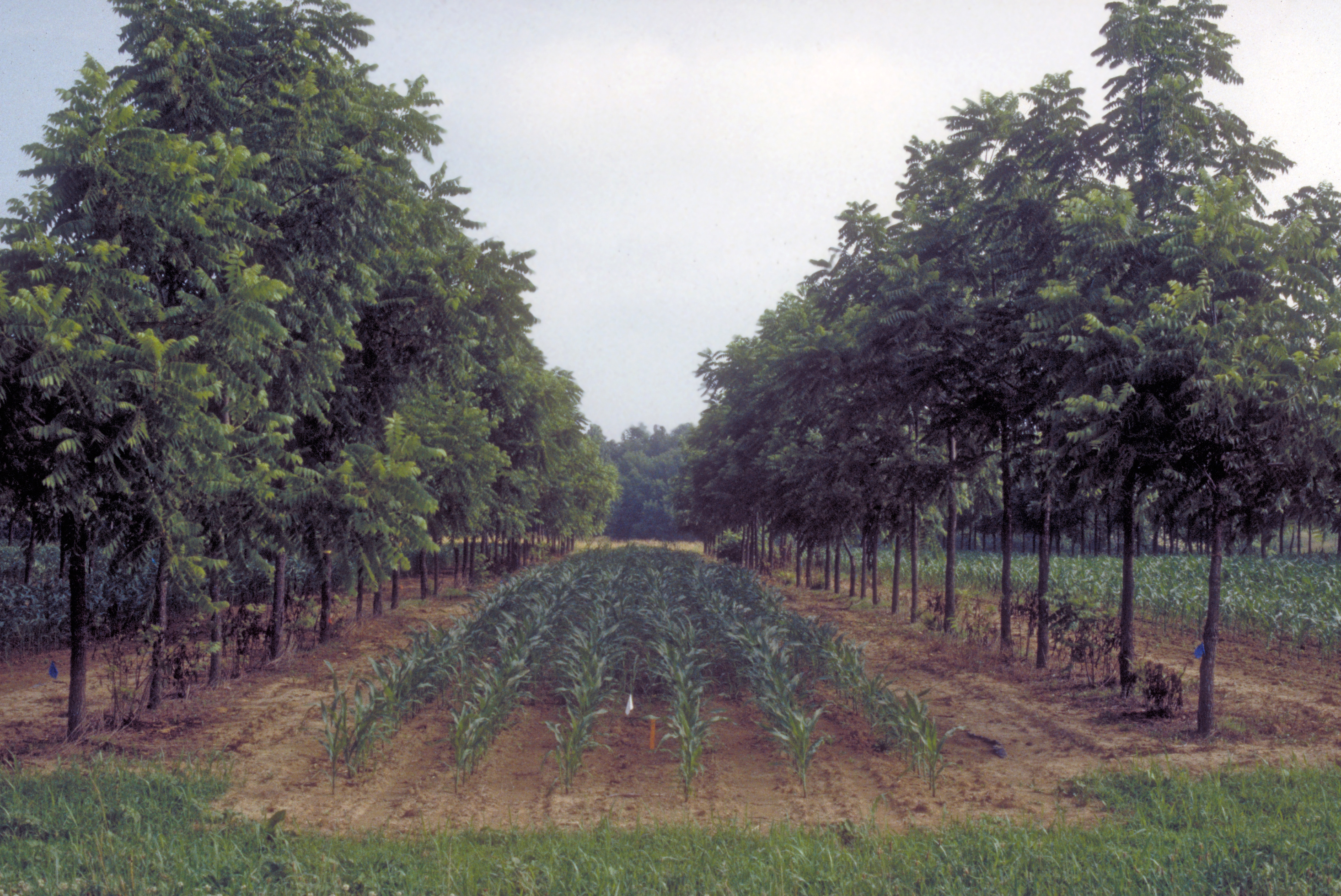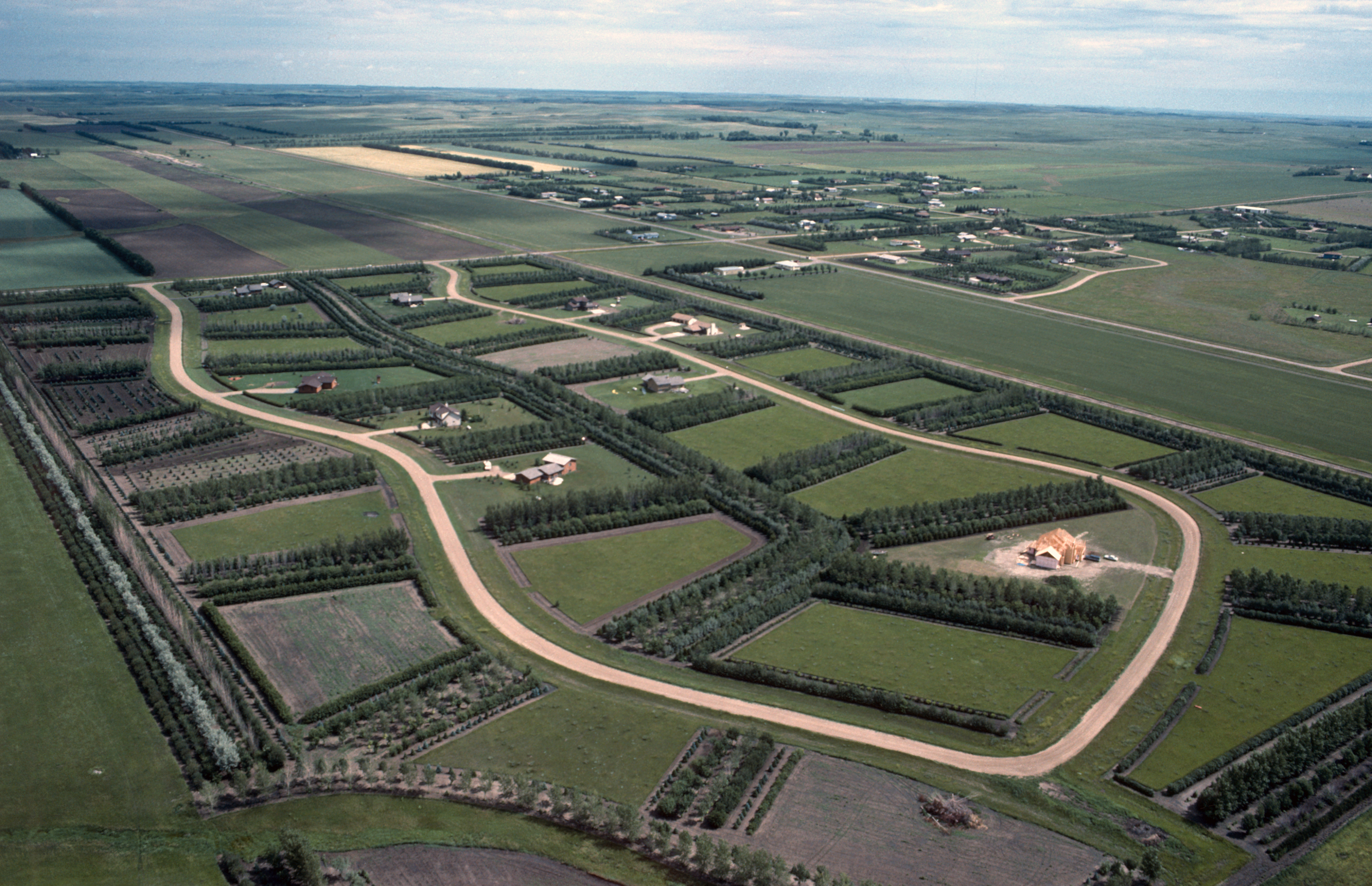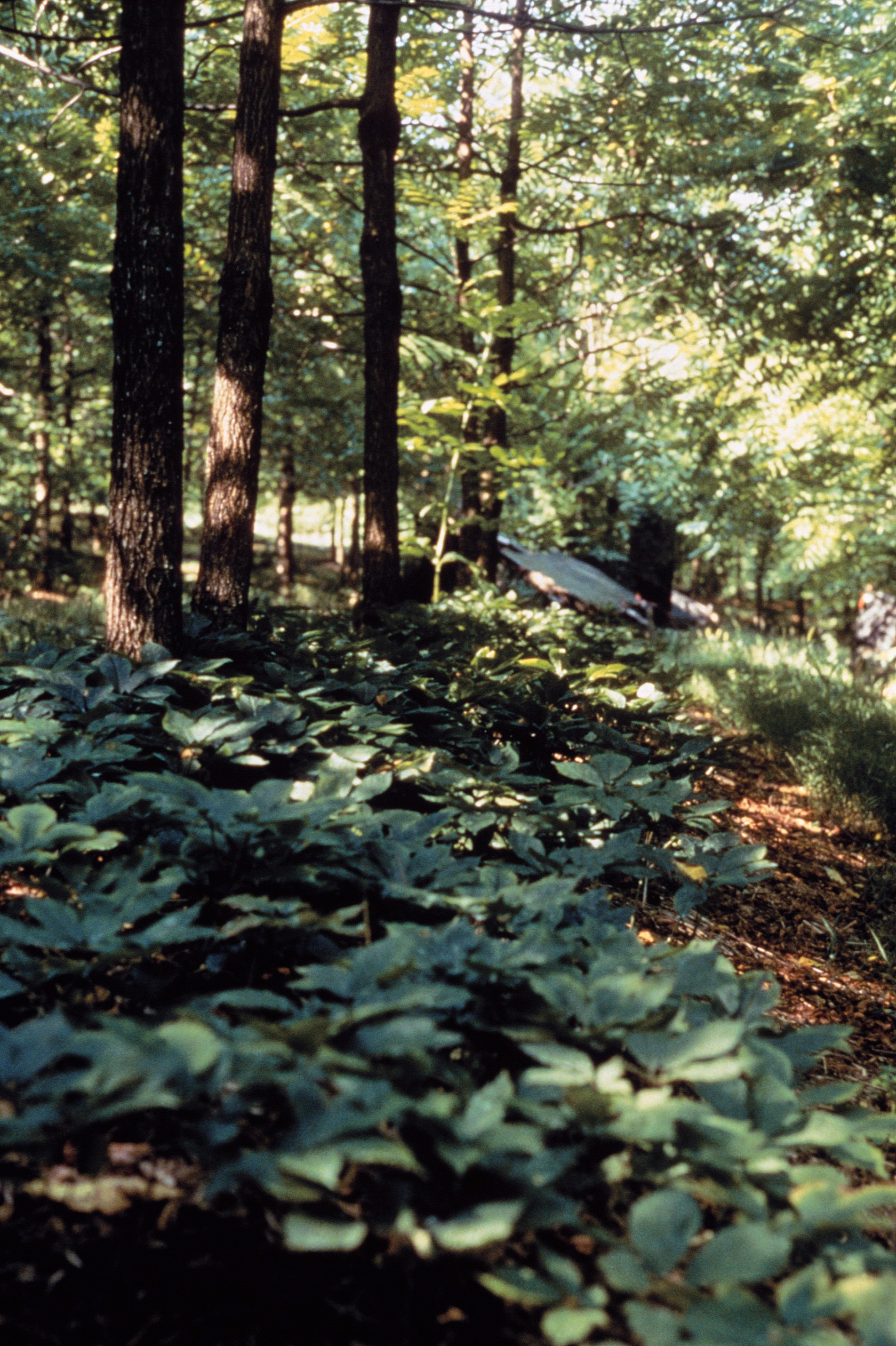Home » Types of Agroforestry
Agroforestry: A Land Management System that Increases Both Yield and Resilience of Agriculture
Types of Agroforestry
There are 3 types of agroforestry systems based on the nature of components: a) Agrisilvicultural, b) Silvopastoral and c) Agrosilvopastoral (Nair, 1985).
a. Agrisilvicultural
The Agrisilvicultural system is a combination of trees and crops. The trees could provide shade or shelter for the crops against the sun and wind. Some nitrogen-fixing tree species could also enrich the soil for better growth of the crops. Some ground covering species could help to prevent soil erosion too.
Examples of agrisilvicultural system include:
1. Alley cropping
Crops are planted in alleys between rows of trees in alley cropping (NAC, 2020). The trees could be harvested for timber, fruit or nut, offering an extra yield in addition to the crops growing between them. There are interactions between the complementary trees and crops. For example, nitrogen-fixing tree species help deliver the exchange of nutrients to the soil, and also provide microclimate regulation with the shade and moisture from the companion trees. These interactions could improve the overall yield of the farmland. In North America, the most widely used tree species in alley cropping is Black Walnut (Juglans nigra) (Nair, 2013). It produces nuts and its timber is valuable.

Photo Credit: USDA National Agroforestry Center
2. Windbreaks
Windbreaks are plantings of trees and shrubs in a linear form. Windbreaks are primarily for slowing down wind, but they could also serve other purposes (NAC, 2020), such as protecting crops that are prone to damage by wind. They also help to control soil erosion induced by wind. Some windbreaks are composed of productive tree species which produce fruit or nut etc. The tree species used in windbreaks are selected by considering the soil type and environmental extremes, e.g. temperature and precipitation, in the location. Usually, more than one row of different species is planted in the windbreak depending on the purpose.

Photo Credit: USDA National Agroforestry Center
3. Forest farming
Forest farming could also be referred as multi-story cropping or home garden (NAC, 2020). In forest farming, crops are planted under the tree canopy with appropriate management. These crops usually benefit by receiving shade and protection from the canopy. Forest farming is one of the most effective ways to diversify the forest and source of income. Ginseng, mushrooms or fern, and moss are the typical crops grown in forest farming.

Photo Credit: USDA National Agroforestry Center
b. Silvopastoral
The silvopastoral system is a combination of trees and domesticated animals grazing on pastures. The trees could be productive by providing timbers, fruits and nuts. They also provide shade to the animals and reduce their stress. The animal’s manure could in turn replenish nutrients for the growth of the pasture and the trees. Ruminants, like cattle, goats and sheep, have a compound stomach which makes them good candidates for integrating into the silvopastoral systems (Calub, 2003).
c. Agrosilvopastoral
The agrosilvopastoral system is basically a combination of the two aforementioned systems which includes theplantation of trees, crops and domesticated animals grazing on pastures. Beneficial interactions between the three components are formed in this system.
References:
Calub. (2003, August). Understanding silvopastoral systems. Retrieved from Agroforestry promotion and development: http://www.fao.org/3/ae948e/ae948e00.htm#Contents
Nair. (2013). Agroforestry: Trees in Support of Sustainable Agriculture. Earth Systems and Environmental Sciences.
Nair, P. (1985). Classification of agroforestry systems. Agroforestry systems, 97-128.
NAC. (2020). Agroforestry Practices. Retrieved from National Agroforestry Center: https://www.fs.usda.gov/nac/practices/index.html
Continue to “Session 2: Benefits and Challenges of Adopting Agroforestry”
© 2022 Centre for Civil Society and Governance at The University of Hong Kong
Except where otherwise noted, contents of this e-study is licensed under a Creative Commons Attribution-NonCommercial-ShareAlike 4.0 License.
![]()


